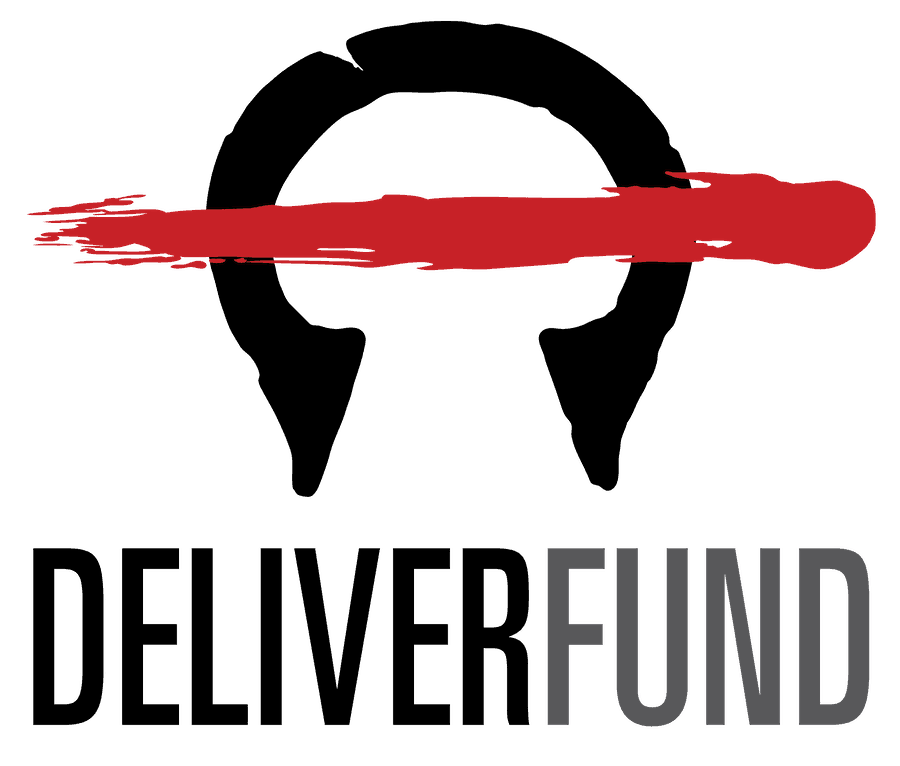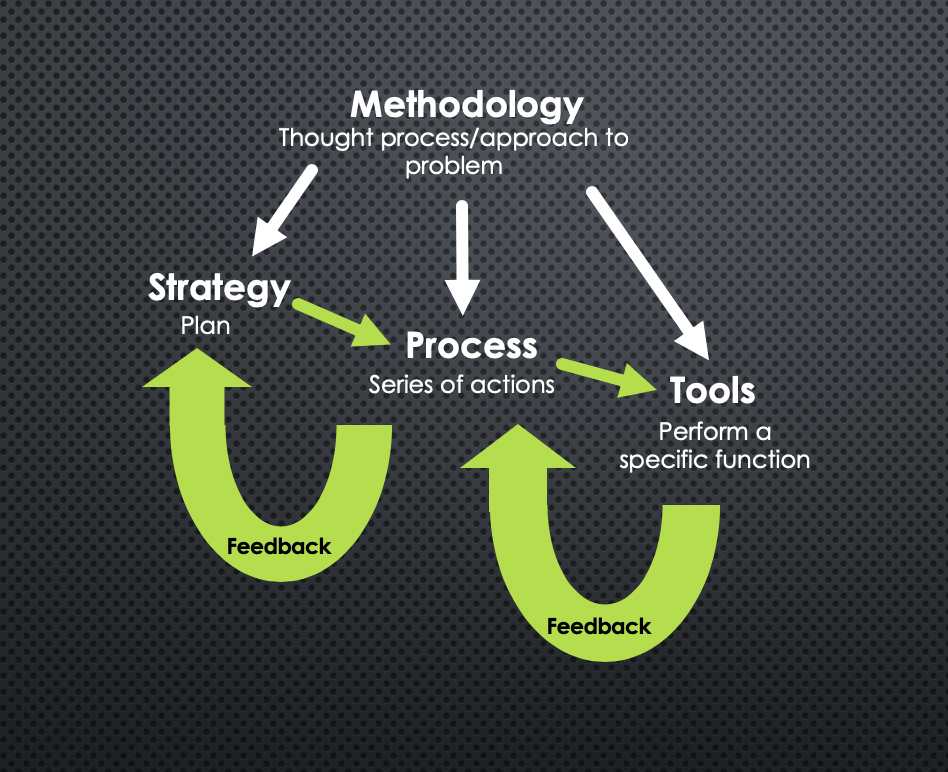Strategy, Process, and Tools Are Its Subjects
By Chief of Operations, Michael Fullilove
A brief discussion on the importance of methodology
Taking the the analogy in the title of this article a step further, a healthy, thoughtful king leads to a healthy prosperous kingdom. The axiom “Innovate or die” has never been truer than it is now.
As COVID-19 descended upon the US, businesses were faced with how to rapidly change their processes in order to continue business. Many businesses were forced to change processes (remote work) and, or, invest in new tools (video conference platforms) to do so. This, however, is not innovation; this is a response to an unforeseen business threat. Many companies will go back to old comfortable ways of doing business which will set them up for future disruptions. Innovation requires completely new thinking about a problem. Addressing it can be summed up as a methodology, strategy, process, tools feedback loop. The COVID Pandemic will not be the last significant threat to the way companies conduct business.
Businesses too often focus on tools to innovate. Not only is this approaching the problem from the wrong direction, a tool by itself is insufficient. Any given tool, in any business, must be supported by a process on how to incorporate or utilize that tool.
Similarly, a process in and of itself cannot be self-supportive. A process must be guided by a strategy which is informed by methodology. Without a methodology to guide a strategy which informs the processes needed, the steps to the solution will be out of sync with each other and the problem. Often, methodology and process are conflated and confused with one another. Whereas a methodology is a way of thinking about a problem, process is the series of steps to be taken to address the problem.
Methodology, strategy, process, and tools are all important to solving a problem, but the methodology is the truly important component to innovation.
Methodology can be seen as how one thinks about solution to the problem and develops the strategy to address it. In fact, the Greek root of “logy” is study. By studying the problem one is afforded new ways of looking at, and understanding, the problem. This thought process is what leads to the innovation. It can also lead to insights and planning for contingencies.
As one studies the problem and method in which to solve the problem, it leads to innovative solutions through the development of a sound strategy and application of appropriate processes and tools. Because methodology is a way of thinking about things, when incorporated throughout the business it helps create a feedback loop – hence the methodology, strategy, process, tools feedback loop. More importantly, methodology needs to inform every aspect of the business.
When one incorporates a new way of continually thinking about problems- that is where the innovation starts. This is in part because, as one develops the methodology, they are inherently going to have a better understanding of the system which surrounds the problem. Once the methodology is established, only then can a coherent strategy be developed to address it. Developing a sound strategy is critical as it will allow respective functional leaders to develop the steps for efficient processes and identification of the proper tools. Without a cogent methodology, a strategy will be flawed and will negatively impact everything else in the business.
There is much focus on process improvement in businesses. Certainly, processes can be improved in many circumstances but often, the processes are flawed because of they are supporting a flawed strategy which came from a poor understanding of the methodology. Addressing flawed processes must include an in-depth look at whether there is an understanding of the methodology for which the processes were designed.
A process by itself will not solve problems as it is just a series of steps; a sort of “how to” manual. Processes must be applied towards tools. Those tools can be hammers, analysis software, or copier machines. Finding the right tools to support the processes is important.
However, tools are only important insofar as they are appropriately supportive of the process. When informed by methodology, the tools will become for more impactful and potentially identify process improvements.
Why then do companies constantly look for new tools and invest in process improvement? Simply put it is the easy button. The world is also awash with people selling easy buttons. But, as is the case with any system, the easy button solution is likely not the best solution. Simply buying a hammer doesn’t mean it will build the Taj Majal. Investing in a new tool that supports poor processes is not going to sufficiently address the problem. Similarly, changing processes that properly support a flawed strategy will continue to perpetuate the problem. Applying, and ensuring understanding of, the methodology at each of the points will create a more cohesive problem solving system.
The methodology, strategy, process, tools feedback loop will not yield truly beneficial solutions unless the methodology is sound.
The methodology is the entry point into designing a system to address a problem. As with any system, the outputs and metrics are only as good as the inputs. A flawed methodology will generate a poor strategy and produce flawed processes and the identification of improper tools to solve the problem. The methodology is also the hardest to change once implemented as it has the most effect downstream. Changing a methodology can also be difficult because it may run counter to “normal” lines of thought in any given industry.
However, if the methodology is flawed, an individual or organization will never be as successful in solving problems as they could be. They will waste additional resources fixing problems that occur in their own cycle that could be dedicated to solving the problem.
While executives must have a sound understanding of the methodology, executive understanding alone is not sufficient. It is also a good idea for employees at every level of the organization to understand the methodology. There are numerous benefits to this approach. Most saliently to this discussion though is, when an employee has the understanding of the methodology, they will be better poised to support the strategy, implement the processes and develop or use the tools that perpetuate the internal innovation cycle. Failing to do so, and solely relying on the next greatest tool, will keep an organization from truly effectively arriving at solutions.
There are many good organizations working in the anti-trafficking space. But the methodology for addressing the problem has largely remained constant across those organizations going back to the beginnings of the anti-slavery movement.
The methodology of DeliverFund has run completely counter to the rest of those working in the human trafficking space.
It is precisely why DeliverFund has been so successful and has had a measurable impact. We fully recognize that there are other organizations with very specific expertise which are critical in the movement. However, the existing methodology was not working sufficiently.
Our methodology informs every aspect and every person in DeliverFund understands the methodology. This has created a cohesive team and keeps everyone rowing in synch with one another. Using the feedback loop as described helps us stay lean and efficient. Our methodology helps keep us on course when we have to make adjustments. It was this measured study of the problem which led to the methodology we employ and has not only prevented us from experiencing the worst of the results of the global pandemic but allowed us to continue working through it and supporting our partners.









